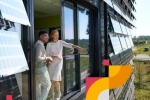
Staffing agencies feel the need to redesign the way they operate
07/09/21
The COVID-19 pandemic is a roller-coaster ride for the Dutch staffing industry. During the crisis, it became more apparent that the industry is not flexible enough to quickly respond to the change. To be able to do so, requires the courage to move away from beaten tracks and explore new possibilities. An ability to transform vast amounts of data into meaningful information leading to standardized processes and people with the right skills in the right place, well supported by advanced technology architecture, is the way forward.

Digital transformation at staffing agencies
At the start of the crisis, the demand for flex workers dropped sharply. However, the first two quarters of 2021 have shown a veering up of business (source: ABU). When looking more closely, the differences per sector are clear. Some sectors, like healthcare, logistics or warehousing showed better results than travel or hospitality. Sanjay Kadam, PwC Director focusing on digital transformation of staffing agencies, is convinced that the dynamics of the COVID-19 pandemic and the unpredictable future ahead have triggered a sense of urgency for digitalisation at staffing agencies. ‘Many feel the need to redesign the way they operate’, says Kadam. ‘They want to become more adaptive and flexible, and more employee centric since it may determine their success or failure in the years ahead.’ Kadam reflects on the situation in the staffing industry and the way it should prepare for the future.
Looking back, how has the recent COVID-19-crisis hit the staffing industry?
Kadam: ‘We noticed mixed effects. Agencies that were able to quickly adapt to the situation by shifting their focus to different sectors did better. But of course, this is only possible if an organisation makes it possible to do so. Some agencies had problems changing their focus since their supporting processes and systems were obstacles. The whole industry felt the sting of COVID-19-related regulations and the resulting additional costs. Planning became more challenging. Also, some agencies had difficulty attracting the right talent. More than usual, staffing agencies were confronted with flex workers not showing up at a job, because of test requirements or illness. Fortunately, the market for staffing is improving, as the first two quarters of 2021 have shown a strong increase in demand.’
What will the flex market look like, say a year from now?
Kadam: ‘That is of course very hard to predict. We see positive signs. The latest data indicate the flex market in the Netherlands is recovering. Contrary to the early months of the pandemic, employees could be back in the driver seat a year from now, triggering the need for staffing agencies to pay extra attention to attracting, retaining, supporting, and training their staff and their flexible workforce. But this pandemic keeps surprising us, so different scenarios are possible as well.’
How can staffing agencies prepare themselves in such a situation?
Kadam: ‘If you're facing an unpredictable future, it is always wise to focus on being agile in order to be able to adjust quickly to whatever situation arises. In my opinion, this is the most viable position to choose. In a situation like this, flexibility and adaptability are key factors. You should be able to quickly change course if a specific segment of the market is booming or showing poor results. And of course, your IT systems must be able to facilitate these rapid changes.’
Optimized Resource Planning
What are the obstacles that hinder staffing agencies from becoming more agile?
Kadam: ‘In our practice we encounter four different kinds of obstacles.’
- Today’s workforce: ‘Agencies have trouble meeting the expectations of their regular staff and flex workers. Today’s workers want access to supporting digital applications. Also, they want to collaborate online and get real-time insights. Not being able to meet these demands, impacts employee satisfaction, employee hiring and retention rates in a negative way.’
- Lack of internal insight: ‘Due to decentralised data, manual compilation is required, and this prevents the real-time insight needed to manage the business. This could result in loss of revenue for the client or the inability to predict future market demand, which can lead to a mismatch between the available skills and market demand.’
- IT cost pressure: ‘Agencies are often working with legacy systems and decoupled architecture, and old school IT-departments unnecessarily overspend on their IT. Cloud technologies (SaaS, IaaS, PaaS) are not broadly leveraged, and this limits agility (scaling up or down), capacity for innovation, and the ability to capitalise on potential cost savings.’
- Compliance: ‘Inefficient processes make complying with changing legal and regulatory requirements unnecessarily complicated and burdensome.’
How can staffing agencies move obstacles like this out of the way?
Kadam: ’They should review a number of elements and the way these elements are integrated and the way they support the company strategy. These elements are people and culture, processes, technology and data.’
People and culture
‘In staffing agencies people are at the core of the business. Because of this, culture is an important element. It impacts the lives of employees, and it determines how strongly they feel connected to their employer.’
Processes
‘Furthermore, internal processes should be as simple as possible. This can be achieved through standardisation and digitalisation. It is important to talk about end-to-end process integration across the whole organisation. Don’t limit this to HR, finance or operations.’
Technology
Based on the above, Kadam sees the need for an integrated IT architecture to support end-to-end business processes.
Data
Data has two purposes according to Kadam: ‘Support the processes and more importantly, drive the business by making timely and informed decisions.’
Maximize Employee Experience with the Mobile App
What process should agencies start to identify possibilities for improvement?
Kadam: ‘I think the starting point is always to try to understand what the future of the organisation will look like. Where are we heading? It’s still too early to argue that the corona crisis will act as an accelerator to get things done. The worst panic seems to be over, but CFOs generally are not yet moving towards the next phase. This vision gives focus and may lead to the decision that a business wants to be as flexible as possible. What’s the new business model that fits a future like that? What insights are needed to support such a business model? Which data do we want to be able to respond quickly to a sudden change in the market situation? And what are the preferred supporting systems and architecture?’
Is becoming flexible all about technology?
Kadam: ‘Certainly not. And even more so in staffing, where people are really at the heart of everything. But technology is a big influencer if you want to become more agile and flexible. It is an instrumental shortcut to move several obstacles out of the way all at once. Technology will help workers to perform their tasks in a simple and efficient manner. It provides the real-time data needed to get the job done and it reduces the number of steps in the work process. This will increase employee satisfaction and improve retention rates. To be honest, when I mention technology, specifically for staffing agencies, I first of all think of mobile cloud solutions. The architecture of cloud solutions, when used in the proper manner, can ensure seamless interaction between employees in real time.’
Fully Automated Invoicing
Why are cloud solutions attractive for staffing agencies?
Kadam: ‘Most staffing-agencies are small or medium-sized, and work on older applications that are developed in-house. These applications are not only a financial burden, but also a hurdle for changing the underlying business models. Cloud solutions can remove many of these hurdles. Cloud solutions are future proof; you always work with the latest software, so every bug fix or new function is automatically available to the workforce. A traditional IT department is no longer necessary, just as the purchase of new software or upgrades is a thing of the past. The time and cost involved in upgrading software is a fraction compared to on premises-software. All this helps to significantly reduce operational costs. Also, cloud solutions drive an organisation towards standardisation and simple best practice processes. This helps to increase flexibility, scaling up or down in sync with the market becomes a lot easier.’
Contact us





















